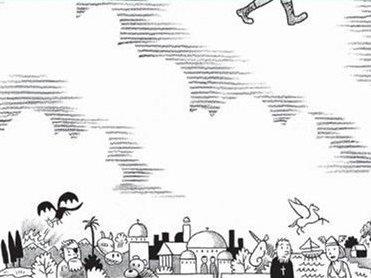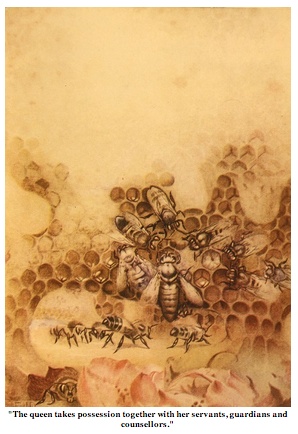Author: Naomi Mitchison
Orignal Publication Date: 1952
Publisher: --
Pages: 157
Genre/s: Fantasy, Children's Literature
Travel light my child, as the Wanderer travels light, and his love will be with you."(57)

Travel Light
Travel Light tells the story of Halla, a girl born to a King, who will also take the very same gift that was given, for he casts her out into the wilds before any words could be spoken. She is nursed by bears and raised by dragons. But the time of dragons has come to past and magic is waning, our dear Halla is destined to make a choice. Who will she be? Halla Bearsbairn? Halla Heroesbane? or Halla Godsgift?
But this is not what Travel Light is simply all about.
“Perhaps she did not die,” said Halla, “perhaps her nurse turned into a bear and carried her away into the forest. Perhaps she was brought up by bears and dragons. Perhaps it was better for her in the end than being a king’s child.”
“That was never the story,” said Modolf.
“Forget the story,” said Halla.
(139)
And indeed it was never the story, just as Travel Light is not a simple children's book. It is about 'traveling light' in a muddled and muddied world, defining your own destiny and in the process finding yourself.
Indeed the story moves with Halla's narrative. The episodic story moves between and beyond conventions and structures of the literary landscape. It seemingly starts out as a didactic fable with Halla’s bearish infancy. In this episode Mitchison grounded the work to Nordic Mythos with the occasional appearances of Valkyries and passing mentions of other Nordic legends. But this didactic fable violently veers off to a dragonish fire-proof adolescence, and with it, the very nature of the narrative. Aside from an amusing discussion of dragons’ distinctive hoarding nature, Mitchison delves into human nature and philosophy and moves from Scandinavian landscape of Paganism to the heart of Constantinople and of Christianity. It is important to note that the Nordic Mythos facet of the tale is never lost as the Valkyrie seems to keep appearing intermittently. As the tale which did not provide a clear span and flow of time (for it would seem that a hundred, thousand years even, have come to past) comes to a close, Halla is seen as a mythic figure herself and the nature of the narrative ends where it starts, Nordic mythology.
As one can see, so much is in work here. Mitchison talks about human nature, beliefs systems and religion, but never, as I felt, did she shove it up to me. I felt that she kept true to the one thing she wanted to impart, ‘Travel Light’ and do so by being good to all. It has no form and defies the traditional linear progressions but I still enjoyed its exceptional and unprecedented transition from a fable-like story to a socio-political examination of human belief and dynamics, again in a sense, by ‘travelling light’, by simplifying matters and driving at its core.
I highly recommend this book, and do so while weeping that it suffers in relative obscurity considering how good it is. Perhaps because it was publish in the era of Tolkien and Lewis? The shadows they have cast have inadvertently and yet effectively laid down a shroud of obscurity over works like this, which is interesting in light of Mitchison’s relation to Tolkien. She was a dear friend to Tolkien, was among the first to read the unpublished The Lord of the Rings, and when the said book suffered from poor reception compared to the then anticipated sale, Mitchison was asked to do blurbs for its marketing promotions.
Naomi Mitchison
Mitchison must have been an exciting and principled individual too! She traveled the world engaging in social activism mostly fighting for Indigenous Communities, to which end, she was adopted as adviser and mother of the Bakgatla Tribe in Botswana. She died in 1999 at the age of 101, if anything; Mitchison herself indeed, ‘traveled light’.
Travel light!















